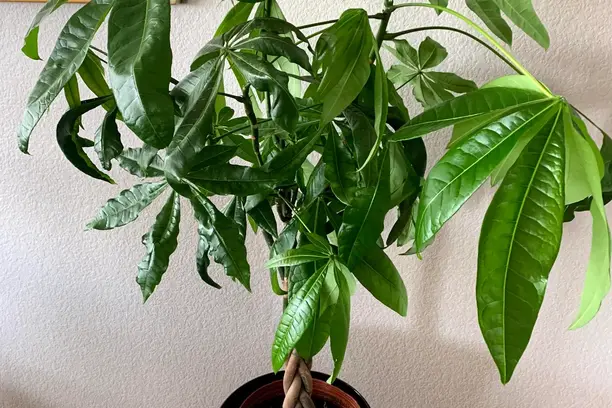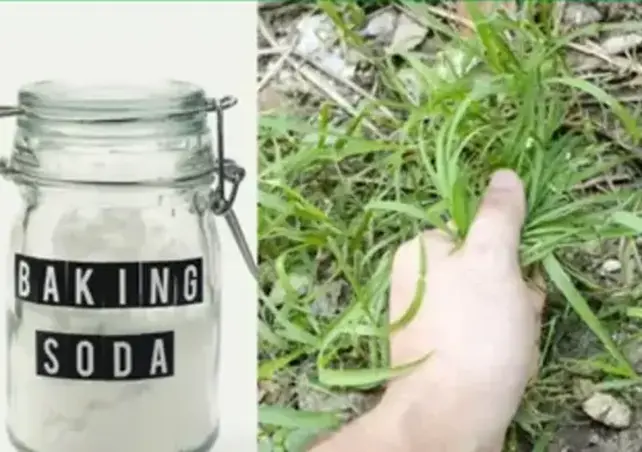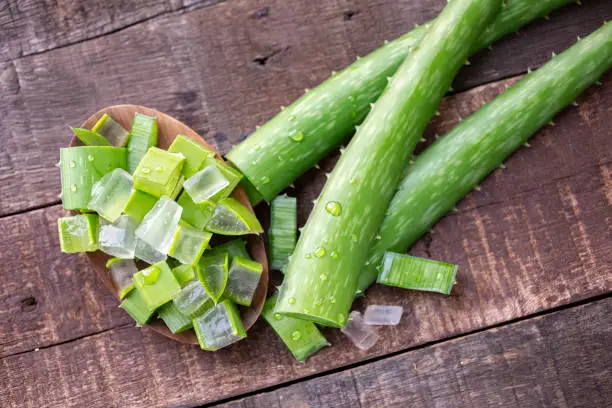Mistletoes, over 1000 species, are evergreen flowering hemiparasitic plants. The semiparasitic plants produce their food via photosynthesis and depend on the host plant for nutrients and water. Mistletoes harm the host plant and can lead to its death. So, how can you remove mistletoes from your trees?
Prevention and control measures are effective ways of getting rid of mistletoes. The prevention measures include planting trees that are not susceptible to mistletoes. The control measures are chemical, mechanical, and biological methods. Getting rid of well-established mistletoes can be time-consuming and expensive. Thus, prevention is the most effective measure to contain semiparasitic plants.
Mistletoes represent vitality, fertility, and romance. The hemiparasitic plant remains evergreen in the winter. A symbol of fertility and life, while most other trees have shed their leaves and flowers. Stealing a kiss under the mistletoe symbolizes romance, and if one refutes the kiss, it signifies bad luck.
Is mistletoe a parasite?
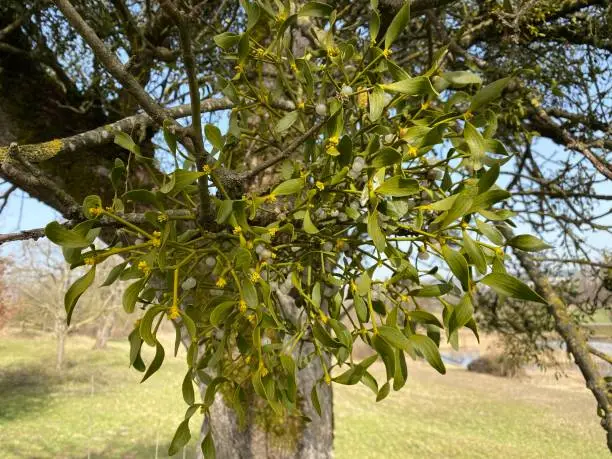
Mistletoe is a hemiparasitic shrub. Mistletoes make their food through photosynthesis and depend on the host for minerals and water. So, mistletoes are parasites.
Mistletoe grows in plants in three significant ways:
- Grows where birds leave their droppings. After birds digest the berries, they excrete the seeds. The seeds with a sticky coating substance that attaches them to trees
- The sticky seeds attach themselves to birds or mammals’ bodies for transportation to a suitable host plant.
- The white berries can also explode, releasing the sticky seeds. The seeds travel at an average speed of 60 miles per hour and scatter as far as 17-20 meters.
On what trees does mistletoe grow?
Mistletoes grow on branches of large deciduous trees like pine and oaks. Some mistletoes prefer orchard fruit trees such as apple, lime, and guava trees. Mistletoes prefer hosts in open situations with plenty of natural light. That is why mistletoes do not grow in woodlands. Different species of mistletoe prefer different types of host plants. Below are some of the plants that mistletoes prefer:
Pine
The fruitless dwarf mistletoes (Arceuthobium species) infest pine trees and other conifer species. There are five species of dwarf mistletoes that affect the pine trees. The names of the five species are per the type of pine tree they infest. Namely, Lodgepole pine dwarf mistletoe, Pinyon dwarf mistletoe, Southwest dwarf mistletoe, Limber pine dwarf mistletoe, and Douglas-fir dwarf mistletoe.
The dwarf mistletoes are dioecious plants. That means they produce male and female flowers on separate plants. The dwarf mistletoes produce small and inconspicuous blooms.
Oak
The American mistletoe, also known as the oak mistletoe (Phoradendron serotinum), usually infests deciduous trees, including the oak group. The Phoradendron villosum is a broadleaf mistletoe that only confines itself on oak trees. The coast live oak is more susceptible to Phoradendron villosum than the other species of the oak group.
Guava
Mistletoes of the genus Tapinanthus (Loranthaceae and globuliferous) are stem hemiparasites with colorful red flowers. The Tapinanthus genus mistletoes prefer the orchard fruit plants, such as guavas. The mistletoes cause severe damage to guava plants.
Do mistletoe harm and kill trees?
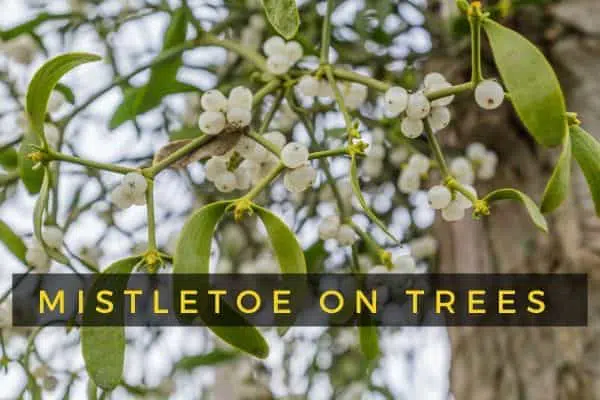
The favorite wintertime flowers can be the kiss of death of the host plant on which it grows. Mistletoes extract water and mineral nutrients from healthy host plants, thus weakening them. The growth of mistletoe is slow and does not pose an immediate threat to healthy plants. So, healthy plants can tolerate a few mistletoes with few harmful effects.
Heavy infestation of mistletoes causes stunted growth, dead branches, and swelling on branches. Subjecting the infected host plant to more stressing conditions like drought and pests and diseases can fasten its death.
How to get rid of mistletoe on trees
There are three main effective methods known for treating mistletoes. The treatment methods include:
Mechanical treatment
Pruning is the most effective way to control established mistletoes. When pruning out the mistletoe, cut back to the branch collar or to a secondary branch to help the tree recover. Base the pruning decision on the heaviness of the infestation and the amount of stress on the host plant. Here is the pruning procedure:
- Cut off the affected limbs as soon as you notice mistletoe growth to avoid further spread.
- Cut back to the branch collar or to a secondary branch to help the tree recover from the removal.
- Ensure the pruning cuts are at least 10-14 inches from the mistletoe point of attachment. The haustoria grow deep within the host’s branches.
- If the mistletoe is growing less than 10 inches from the trunk or primary branch, cut off the branch.
- Cover the pruning wound with a black plastic bag. The mistletoe cannot thrive in darkness. The plastic will kill fixed haustoria and suppress future mistletoe growth.
- If the host plant has a severe mistletoe infestation, cut it off completely.
- It is also vital not to over-prune your tree. In young, healthy plants, do not prune more than 20 to 30 percent in a year. Mature or unhealthy plants do not prune more than 10 percent in a year.
Chemical treatment
The use of chemicals is a temporary control method, especially on well-established mistletoes. Spraying ethephon, a growth-regulating chemical on mistletoes, dries out flowers and shoots causing them to fall off the tree. But, the mistletoe’s root system, haustoria, remains behind and leads to regrowth. The regrowth needs retreatment, making this method quite expensive. Below is the procedure:
- Mix ¼ to ½ part of the ethephon with two gallons of water.
- Spray the mixture to only individual mistletoes thoroughly.
- Spray the ethephon mixture in spring under a temperature of 65oF and on dormant host plants. Treating when the host plant is dormant to avoid risking the death of the host plant.
- Ethephon sprays take 7-14 days to work, therefore spray-on mistletoes early enough before starting seedling.
- Ethephon does not kill the mistletoe’s haustoria. Thus an additional application in about 3-4 years is unavoidable to kill the regrowth.
Biological treatment
Biological controls using insects such as aphids to feed on the mistletoes sap, leaves, shoots, flowers, and fruits is another control method. A heavy infestation of insects on the mistletoe weakens it, leading to its death. However, this method is not as effective as chemical and mechanical control methods.
How to prevent plants from mistletoe infestation?
Prevention is more effective than treatment. There are two significant ways of preventing mistletoes infestation:
Planting resistant species
The prevention measure advocates for the planting of tree species that are resistant to mistletoes. Some of these trees include eucalyptus, sycamore, Bradford flowering pear, conifers such as cedar and redwood, golden-run tree, and the Chinese pistache, among others. Plant resistant species in areas susceptible to mistletoes or when replacing infested trees.
Integrated pest management in a community
Community cooperation and a combination of other preventive measures can help control mistletoe infestations. A neighborhood can agree to only plant trees that are not susceptible to mistletoe infestation. Also, it is easier and more economical to fight mistletoe infestation as a community rather than as an individual. As a community, residents can pool resources to hire tree services to remove all mistletoes in their neighborhood.
References:
[1] Woodland Trust Organization, United Kingdoms: Where-does-mistletoe-grow
[2] Colorado State University, Extension: Methods to control mistletoe 199129111.pdf
[3] University of California, Agriculture and Natural Resource: Chemical Control
